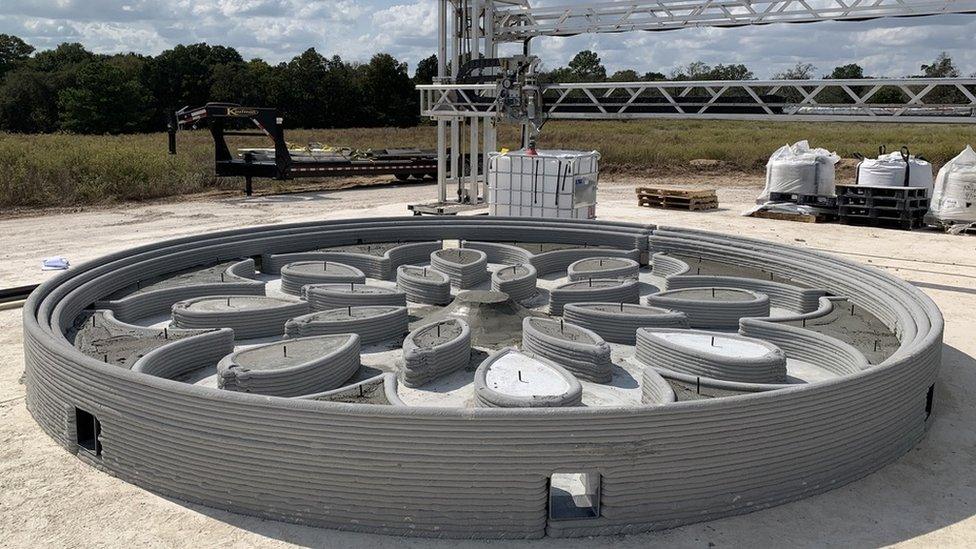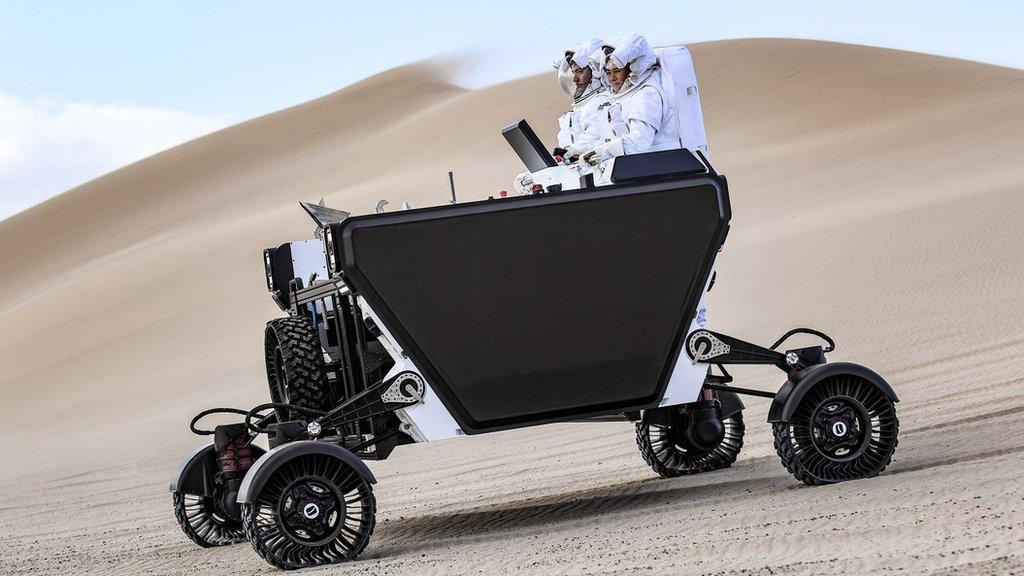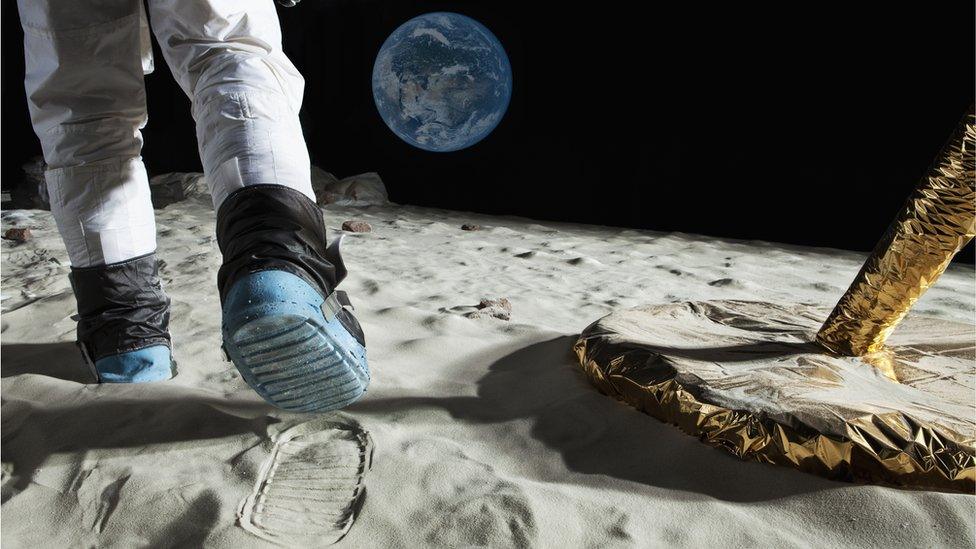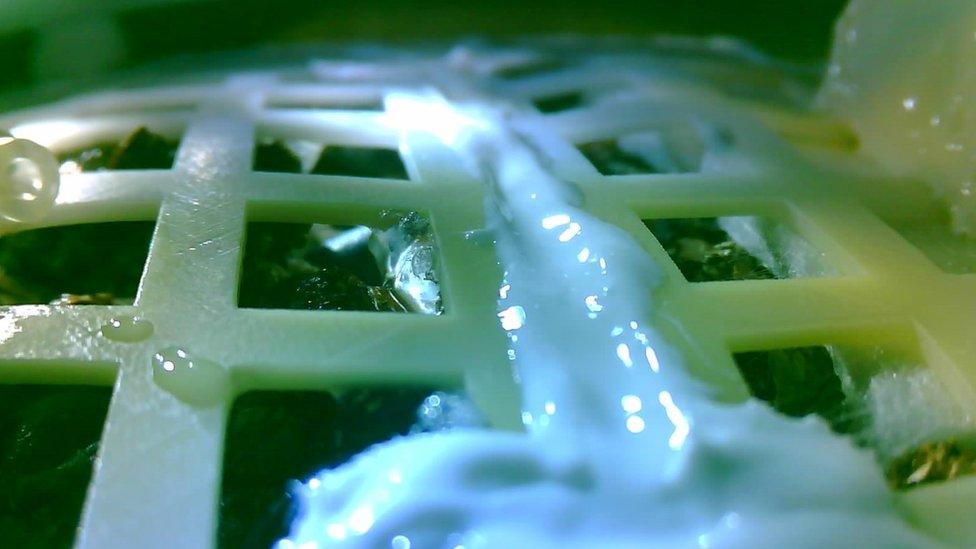Nasa: How to build a settlement on the Moon
- Published
- comments

An illustration of the construction of a lunar outpost with astronauts on the surface of the Moon
As Nasa plans for long-term space exploration on the Moon, it needs structures in place like buildings, landing pads, roads and power supplies.
The US Space agency has chosen a company to develop construction technologies to build the infrastructure needed.
ICON, a construction company based in Texas in the USA, will look at creating technologies which can use materials from the Moon itself.
It's part of a wider plan by Nasa to send people to the Moon for the first time in 50 years before 2025 as part of the Artemis mission and eventually build a long-term human base there.
How do you build on the Moon?

A 3D printed subscale prototype of the Lunar PAD developed by ICON
One of the challenges of building on the Moon is getting the materials there, so to avoid this the goal is to source the materials from the substances which already exist on the Moon.
The project team working on the construction also plan to use 3D printing technology to build structures from those materials.
The structures need to withstand extreme and temperatures and be very durable.
In order to explore other worlds, we need innovative new technologies adapted to those environments and our exploration needs.
Previously the European Space Agency has made bricks by baking Moon dust with concentrated sunlight for five hours.
ICON has already 3D-printed a habitat for Mars, called Mars Dune Alpha, that will be used during a NASA's Mars mission starting in 2023.
The construction company has also 3D-printed a lunar launch and landing pad to help craft land and take-off on the Moon.
It's hoped these tests will develop 3D-building technologies with the long term aim of helping humans live on the Moon.
- Published7 April 2022

- Published20 November 2022

- Published16 January 2019

